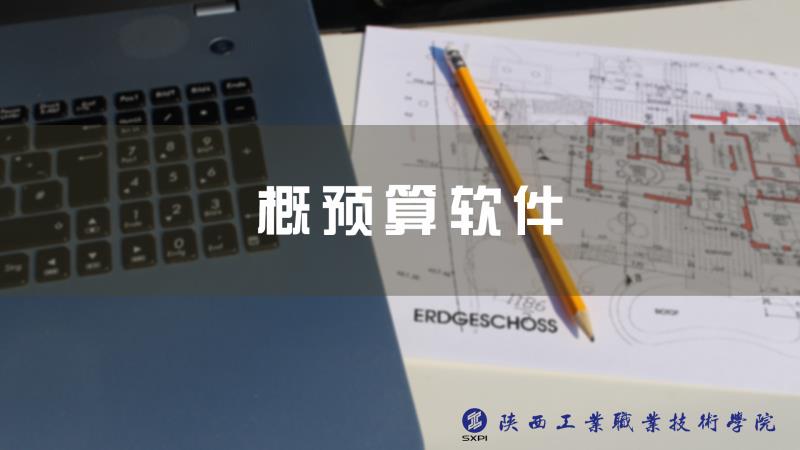
当前课程知识点:Chinese Folk Motif Arts > Unit 3. Chinese Shadow Puppetry: Characters Developed by Scissors and Nicking Chisels > 3.3 The techniques of expression of Chinese folk paper cut > 3.3 The techniques of expression of Chinese folk paper cut
返回《Chinese Folk Motif Arts》慕课在线视频课程列表
返回《Chinese Folk Motif Arts》慕课在线视频列表
三 民间剪纸的表现手法
民间剪纸的艺术表现
不以再现客观现实为目的
劳动者对于自我主观意识的强烈的自信
导致了剪纸艺术表现中
注重主观直觉 意念和臆断的倾向
对客观世界的认识充满个人的情感色彩
形成了以重建美好现实 理想和必然
这一特殊的造型规律
首先是直觉的表现方法
剪纸能手王占兰
她在剪这幅老虎的时候
总是把侧面的老虎眼睛剪成两只眼睛
她的解释是
老虎就是长有两只眼睛的嘛
她把从不同视角
观察到的老虎的正面和侧面形象
都在同一个图形上呈现出来
通过这种方式
来表达作者对客观存在的直觉理解
剪纸《猫逮老鼠》
它运用了同样的直觉表现手法
在作者的直觉中
猫 就是长有两只眼睛的
不管它是处于正面还是侧面
其次 是意念的表现手法
剪纸艺人齐秀花 剪了一幅《牛拉车》
她对剪纸中牛的前腿握车把的解释是
拉车的是它爹 站在车子上的是孩子
它爹躬着腰拉车 不就像个老头子了吗
这种父子关系的固有观念
不管是人物 动物 都是一样
王秀清在她的作品《马吃草》中
把人处理成三个面 把马处理成两个面
她的解释是
牲口吃草不会光在一个地方不动
一会儿吃这边 一会儿吃那边
娃要照顾畜生吃草
光盯着一个方向是不够的
所以他就要左顾右盼
她把心中的意念用恰当的方式表达出来
使之符合人的情感
“合理”要让步于“表意”
这是剪纸《母子虎》
表现了老虎妈妈在作者头脑中固有的天性
“护子”和“生存”
因此 这只老虎剪出了三只眼睛 两个面
右边那个面
(她)回眸看着肚子里的虎宝宝
俗话说 “虎毒不食子”
老虎的左边是一个接近正面的造型
它瞪着一双大眼睛
虎视眈眈地看着前方 像是在觅食
显露了老虎“森林之王”的本性
这是剪纸《老虎吃五毒》
把老虎肚子里面的“五毒”全部都剪出来了
作者的解释是这样
不是“五毒”爬到老虎身上去了
是老虎把“五毒”吃到肚子里去啦
对于这些视觉看不见的现象
可以凭主观经验和推断把它展现出来
直接反映表象掩盖下的事实和客观必然
民间剪纸《开汽车》
汽车里坐的人才是表达的主要对象
因此 这辆车主要是剪了车里面的人
车的外表只是一个简单的躯壳
视线挡不住真实的内容
在作者的意想之中
《一座山》是挡不住山里的动物的
那么 梨子里面的籽也能够剪出来
民间剪纸与吉祥纹样
吉利祥瑞的观念
是中国民众生活的重要精神追求
吉祥纹样有别于一般的纹样
它着重于寓意吉祥的内涵
吉祥纹样是睿智的中国人以丰富的想象力
将抽象的吉祥概念与具体的事物联系起来
通过物象的形 声 名 意等创作出来
具有吉祥象征意义和表象特征的纹样样式
中国吉祥纹样具有丰富的思想内涵
并且形成了一套独特的表现手法
首先是寓意 寓意是借物托意
它以实在的形象喻指某种抽象的吉祥概念
寓意又有明喻 暗喻和借喻之分
例如 以葫芦 莲蓬寓意“多子”
以桃 灵芝寓意“长寿”
以龙凤寓意“吉祥”
以鸳鸯 双飞燕寓意“夫妻恩爱”
以白头鸟寓意夫妻“白头到老”
以并蒂莲寓意夫妻“永结同心”
民间把鱼从象征女阴
发展成为象征男女爱情双方
如“如鱼得水” “鱼水情深”等
又因为鱼的生殖能力很强
人们进一步把鱼看成了人丁兴旺的“吉祥物”
左边这(两)条鱼它就在“戏莲”
谐音 谐音在民间俗称“口彩”
它是利用中国的汉字音 意相通的特点
在吉祥纹样中以客观事实的语音
去谐音类比与其同音或近音的事物
利用字音相谐构成图案
比如 喜鹊 梅花与“喜”和“眉”的字同音
将其组合起来表示“喜上眉梢”
金鱼与“金玉”同音
因此用金鱼和水缸组成画面
寓意“金玉满堂”
蝙蝠与“福” 鹿与“禄”同音
用蝙蝠 桃 鹿代表“福 禄 寿”
再来看凤鸟纹样
在民间剪纸中 凤鸟纹样占的比重较大
尤以“鸾凤和鸣” “凤穿牡丹”用得最多
这两只凤凰
一上一下 迂回盘旋 遥相呼应
所衬云彩表示祥云缭绕 幸福吉祥
同时也为了整幅作品的互相连接
体现了剪纸作品的工艺特点
这幅剪纸采用了不同的处理方法
上面是“阳刻” 这个地方是“阴刻”
它的图形呈现深底白花
这是一幅凤鸟在牡丹丛中飞舞的形象
花卉刻画得特别茂盛 使人感到幸福美满
-A brief introduction of the study unit
-1.1 The meaning of learning Chinese folk motifs
--1.1 The meaning of learning Chinese folk motifs
-1.2 A brief introduction of graph
--1.2 A brief introduction of graph
-1.3 The basic categories of Chinese folk motifs
--1.3 The basic categories of Chinese folk motifs
-1.4 The basic characteristics of Chinese folk motifs art
--1.4 The basic characteristics of Chinese folk motifs art
-1.5 Research on the questions and the motifs cases
--(1) Researches and case studies on motifs
--(2)Research on Traditional Motifs
-1.6 Unit assignment: thinking questions
-1.7 Online Quiz
--1.7 Online Quiz
-1.8 Expanded learning resources
--Embroidery of Guizhou Miao ethnic group (Video)
--The Magnificent Miao Ethnic Group: Wordless Book of Miao (Video)
--Chinese Folk Motifs(Graphics and images)
--Websites
-A brief introduction of the study unit
-2.1 The modeling methods of folk motifs
--2.1 The modeling methods of folk motifs (Part 1)
--2.1 The modeling methods of folk motifs (Part 2)
-2.2 Aesthetic implication of folk motifs
--2.1 Aesthetic implication of folk motifs (Part 1)
--2.2 Aesthetic implication of folk motifs (Part 2)
-2.3 Research on the questions and the motifs cases
--Research on the questions
-2.4 Art Practice: Canton Embroidery
-2.5 Unit assignment: Judgment and thinking questions
--Judgment questions
-2.6 Expanded learning resources
--My hereditary treasure: new year woodblock print made by Tai Liping (Video)
--Taohuawu new year woodblock print (Graphics)
-A brief introduction of the study unit
-3.1 A Brief Introduction of Chinese Folk Paper Cut
--3.1 A Brief Introduction of Chinese Folk Paper Cut
-3.2 The craft of Chinese folk paper cut
--3.2 The craft of Chinese folk paper cut
-3.3 The techniques of expression of Chinese folk paper cut
--3.3 The techniques of expression of Chinese folk paper cut
-3.4 A brief introduction of Chinese shadow puppetry
--3.4 A brief introduction of Chinese shadow puppetry
-3.5 The artistic characteristics of Chinese shadow puppetry
--3.5 The artistic characteristics of Chinese shadow puppetry
-3.6 The modeling of Chinese shadow puppetry
--3.6 The modeling of Chinese shadow puppetry
-3.7 Art Practice: Paper Cut
--A Brief Introduction of Art Practice
--Traditional Chinese Paper Cutting : Butterfly
--Traditional Chinese Paper Cutting : Baby with twisted knors of har
--Paper-cut creative case (picture)
-3.8 Unit assignment: Paper Cut creation
-3.9 Online Quiz
--3.9 Online Quiz
-3.10 Expanded learning resources
--Backstage performance of shadow play (video) (Ⅰ)
--Backstage performance of shadow play (video) (Ⅱ)
--Shadow play "Monkey Eating Peach"
--Analysis of Chinese Shadow Puppet Art
-A brief introduction of the study unit
-4.1 The State of Chu and Chu Culture
--4.1 The State of Chu and Chu Culture
-4.2 Representative Graphics of Chu Culture Remains
--4.2 Representative Graphics of Chu Culture Remains
-4.3 Intangible Cultural Heritage of Chu Culture
--4.3 Intangible Cultural Heritage of Chu Culture (Part 1)
--4.3 Intangible Cultural Heritage of Chu Culture (Part 2)
-4.4 Research on the questions and the motifs cases
--Chu Culture Relics Graphics
--The motifs case : Tujia ethnic Brocade "Xilan Kapu"
-4.5 Art Practice: Decorative painting
--Art Practice: Decorative painting sketch
--Art Practice: Decorative painting modeling
--Art Practice: Decorative painting coloring
-4.6 Unit assignment
--4.6 Unit assignment
-4.7 Online Quiz
--4.7 Online Quiz
-4.8 Expanded learning resources
--Bronze ware, lacquerware, silk fabrics of Chu culture
--Yao ethnic bright-colored embroidery applique, Dong ethnic brocade
-A brief introduction of the study unit
-5.1 Totem
-5.2 Panhu Worship
-5.3 The Legends of Totem in Costumes
--5.3 The Legends of Totem in Costumes
-5.4 The Tattoos of the Li Ethnic Group
--5.4 The Tattoos of the Li Ethnic Group
-5.5 Art Practice: Tie-dye
--Xiang Yunfang tie-dyeing (clamp-tie) video
--Xiang Yunfang tie-dyeing (bundle-tie) video
--Xiang Yunfang tie-dyeing (dog-paw flower) video
-5.6 Research on the questions and the motifs cases
--Totem problem exploration
--Traditional graphics cases:The "Hundred-bird Clothes" of the Miao ethnic in Guizhou
-5.7 Unit assignment: Tie-dye creation and thinking questions
--5.7 Unit assignment: Tie-dye creation and thinking questions
-5. 8 Expanded learning resources
--Miao embroidery in Taijiang (Video)
--The Magnificent Miao Ethnic: Who made life so glorious (Video)
--National costumes of southern China
-A brief introduction of the study unit
-6.1 Philosophical Reflections on the Harmony of Taiji and “Yin and Yang”
--6.1 Philosophical Reflections on the Harmony of Taiji and “Yin and Yang”
-6.2 “Nine Palaces” and Its Spatial Layout
--6.2 “Nine Palaces” and Its Spatial Layout
-6.3 Plane Static Four-dimensional Space
--6.3 Plane Static Four-dimensional Space
-6.4 “Almorphism” of Batik Graphics
--6.4 “Almorphism” of Batik Graphics
-6.5 Ingenious Calculations by Folk Carpenters
--6.5 Ingenious Calculations by Folk Carpenters
-6.6 Research on the questions and the motifs cases
--Research on the questions and the motifs cases
--Introduction to Miao Batik (Video)
--Danzhai Batik - Painting Wax (Video)
-6.7 Unit assignment: thinking questions
--6.7 Unit assignment: thinking questions
-6.8 Online Quiz
--6.8 Online Quiz
-6.9 Expanded learning resources
--The image of dragon in Chinese folk motifs (graphic and image)


